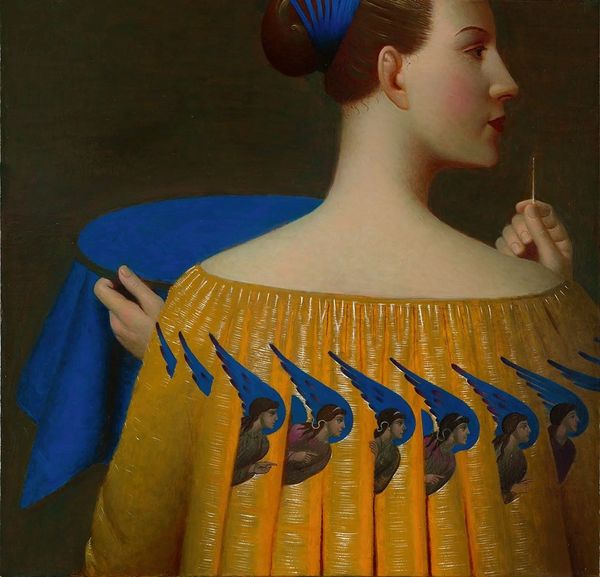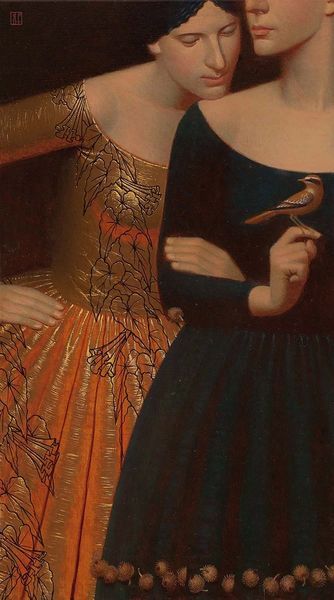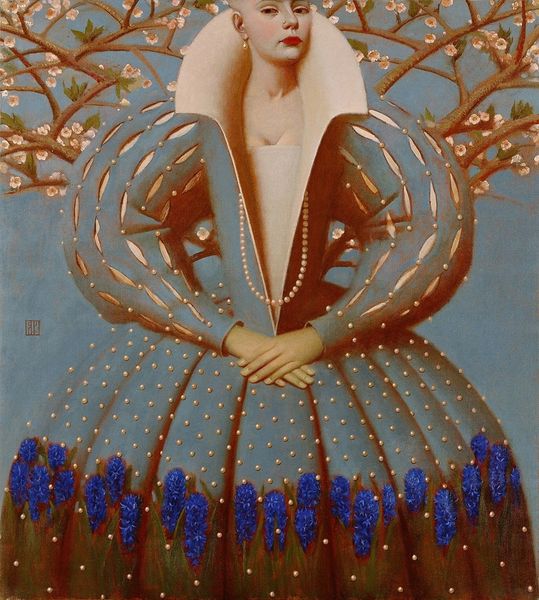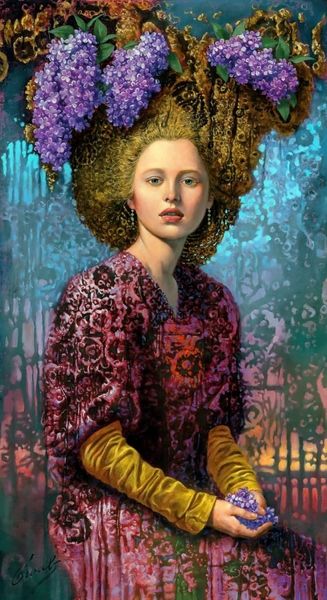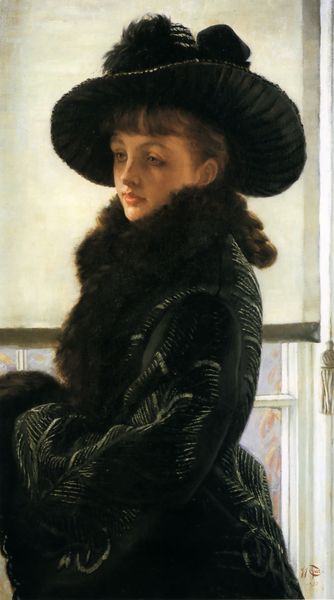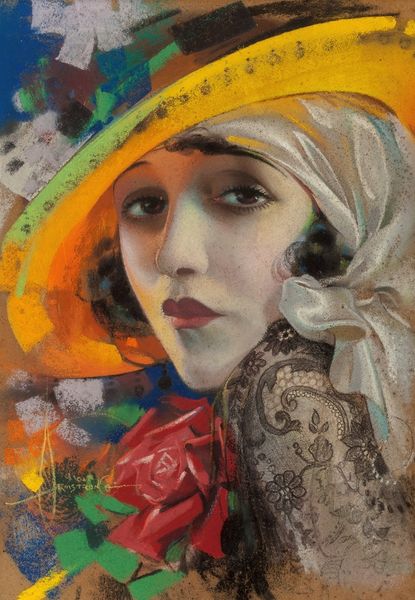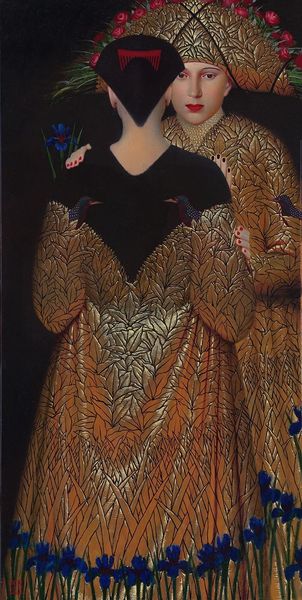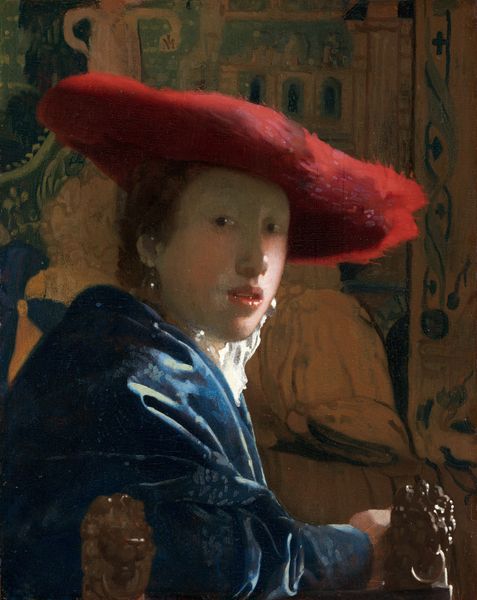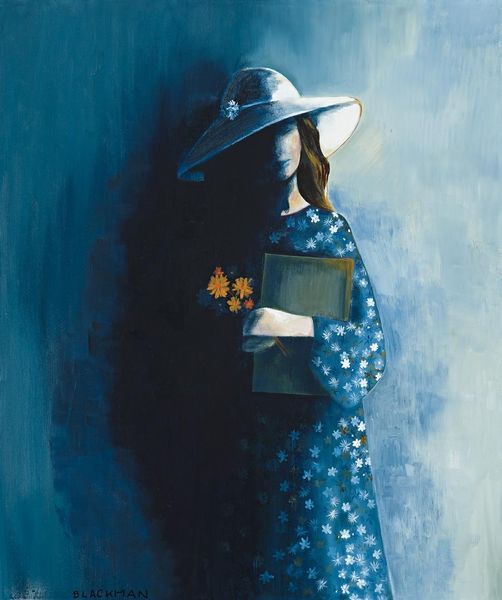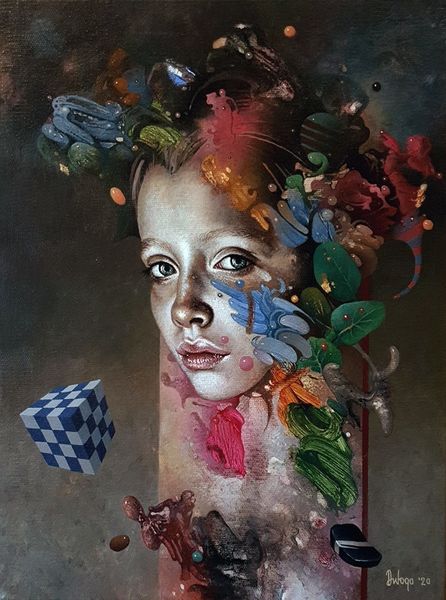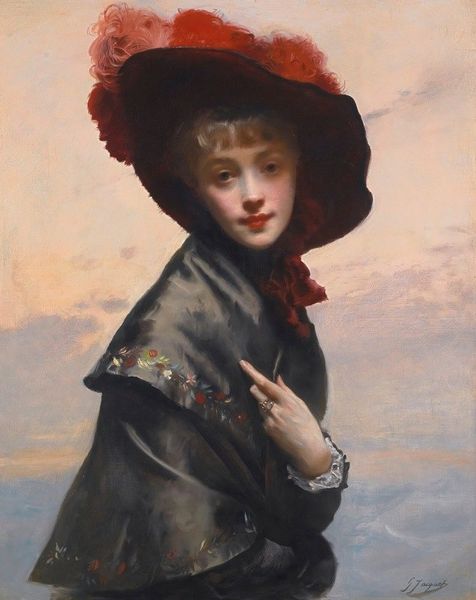
oil-paint
#
portrait
#
allegory
#
oil-paint
#
figuration
#
oil painting
#
history-painting
#
surrealism
#
portrait art
#
realism
Copyright: Modern Artists: Artvee
Curator: This is Carlos Sablón’s 2013 painting, “Mélancolie,” an oil on canvas piece. It immediately brings to mind the history painting genre, but with a contemporary sensibility. Editor: Yes, immediately, this artwork plunges me into introspection. The subdued lighting and downward gaze certainly amplify that melancholic feeling. It's like a Renaissance portrait seen through a slightly distorted lens, a contemporary spin with the aesthetics of the past. Curator: Precisely. The use of a historical style, like the ruff collar and the feathered hat, speaks volumes. They aren't merely decorative; they symbolize status, perhaps a bygone era's values, now burdened by present-day awareness. The symbols at the top almost look like alchemical imagery. What could those be pointing to? Editor: A possible connection with mortality or transformation? And consider the background details against this melancholic figure. We see this strange pictorial construction that doesn’t feel real in space but feels surreal. We're given both hyperrealism and jarring dreamlike imagery that reflects themes of grief, beauty, and transience. Curator: The placement of flowers, almost superimposed, feels crucial. Historically, flowers are rich with symbolic language: lilies often connected to death and remembrance, perhaps hinting at mourning? Sablon seems to deliberately layer signs and signifiers to create depth. Editor: Yes, the artist subtly inserts these flowers as cultural objects that speak about certain themes in history: flowers related to death and mourning, dress style related to a colonial/noble past and certain symbol in the top that maybe have connections to colonialism, nobility, mourning and so on. "Mélancolie" makes us analyze how the emotional world is interwoven into systems of power and social stratification. I think we need to keep considering these types of representations in the XXI century. Curator: I agree completely. What at first glance seems like a portrait is truly a potent blend of allegory and observation, offering viewers an invitation into the complex landscape of memory, history and emotion. Editor: Absolutely, by engaging with this representation, we also connect with contemporary conversations around identity, memory and the reinterpretation of historical legacies through artistic practices. It's about time traveling, and then reflecting.
Comments
No comments
Be the first to comment and join the conversation on the ultimate creative platform.
